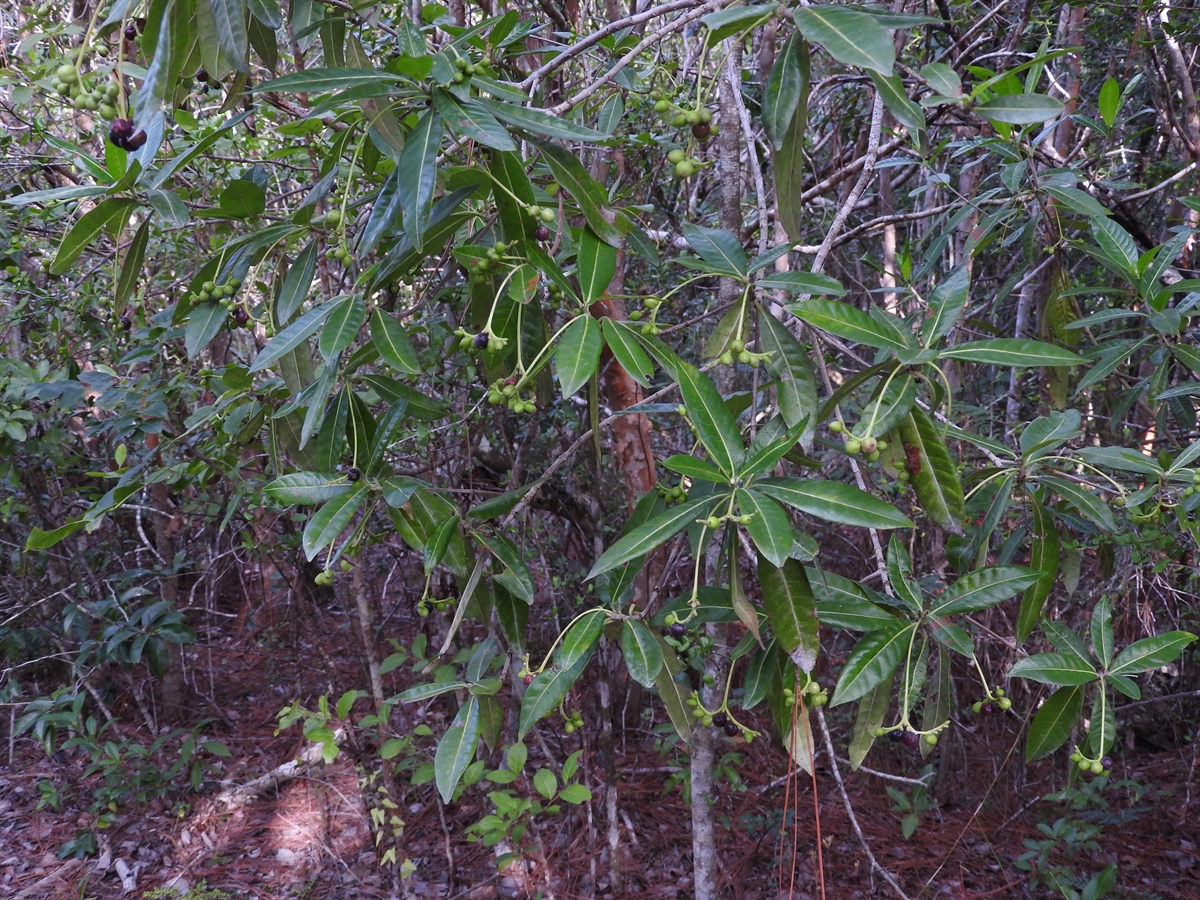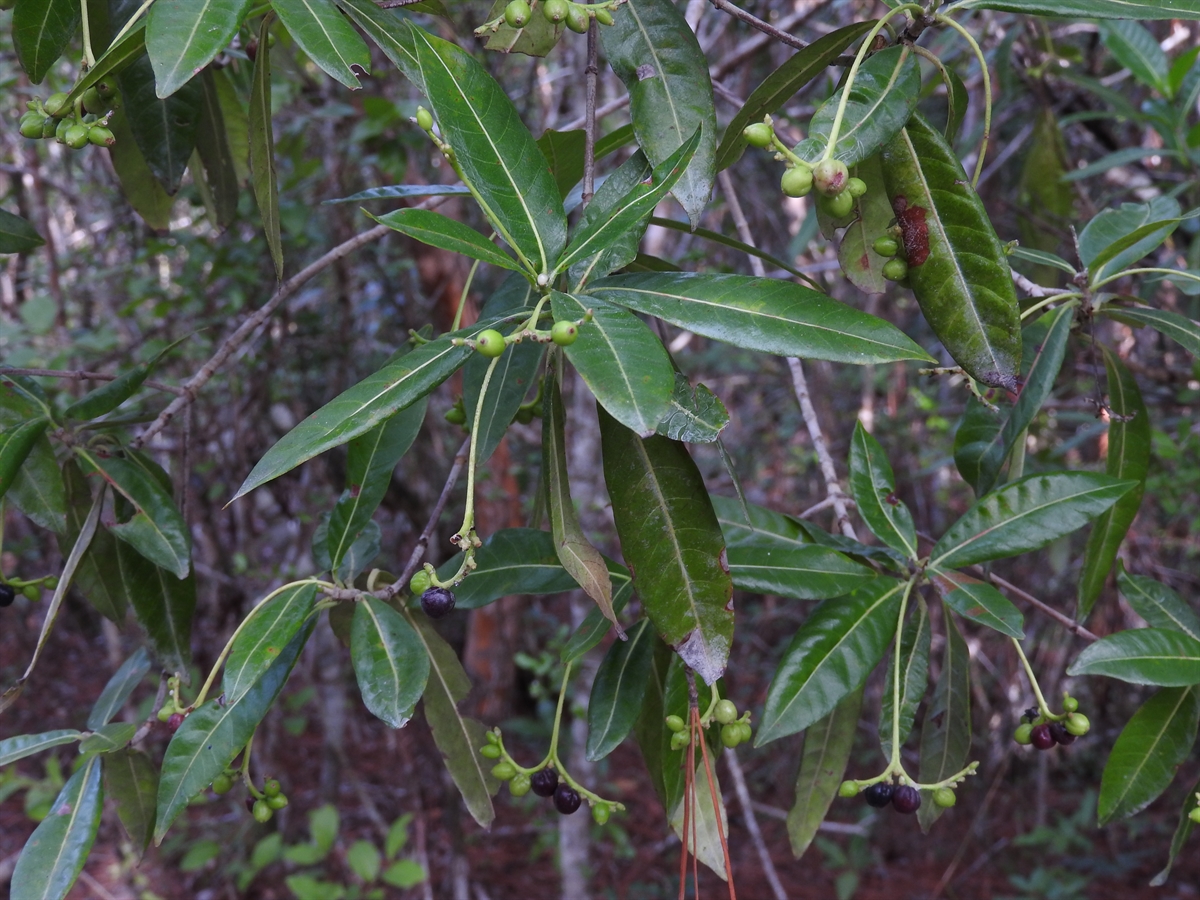Habit: Stenostomum densiflorum grows as a shrub to small tree up to 6 meters in height (typically 2-3 meters) with glabrous stems. The apical meristems have a white/yellow lacquer covering them. The shiny, resinous leaves are arranged oppositely, with tubular fringed stipules between the petioles. The leaves are oblong to lanceolate, to 12 cm long, with a acute leaf apex and an entire margin. The abaxial surface has domatia along the midvein.
The complete, perfect, actinomorphic, sessile, flowers are arranged in axillary forked cymes with up to 10 flowers each. The calyx has 5 fused sepals. The corolla has 5 white, fused petals that are up to 1 cm long. There are 5 stamens that are fused to the perianth forming a hypanthium. The ovary is inferior with 4-5 locules each with 1 ovule. The fruit is a round blue/black drupe at maturity.
Habitat: Stenostomum densiflorum grows in Dry Broadleaf Evergreen Formation- Forest/Woodland/Shrubland/(coppice) and Pine Woodlands.
Distribution: Stenostomum densiflorum occurs in the Lucayan Archipelago on the northern Pine islands and in parts of the Greater Antilles.
Medicinal/Cultural/Economic usage: Stenostomum densiflorum is not known to be used medicinally in the Lucayan Archipelago.


